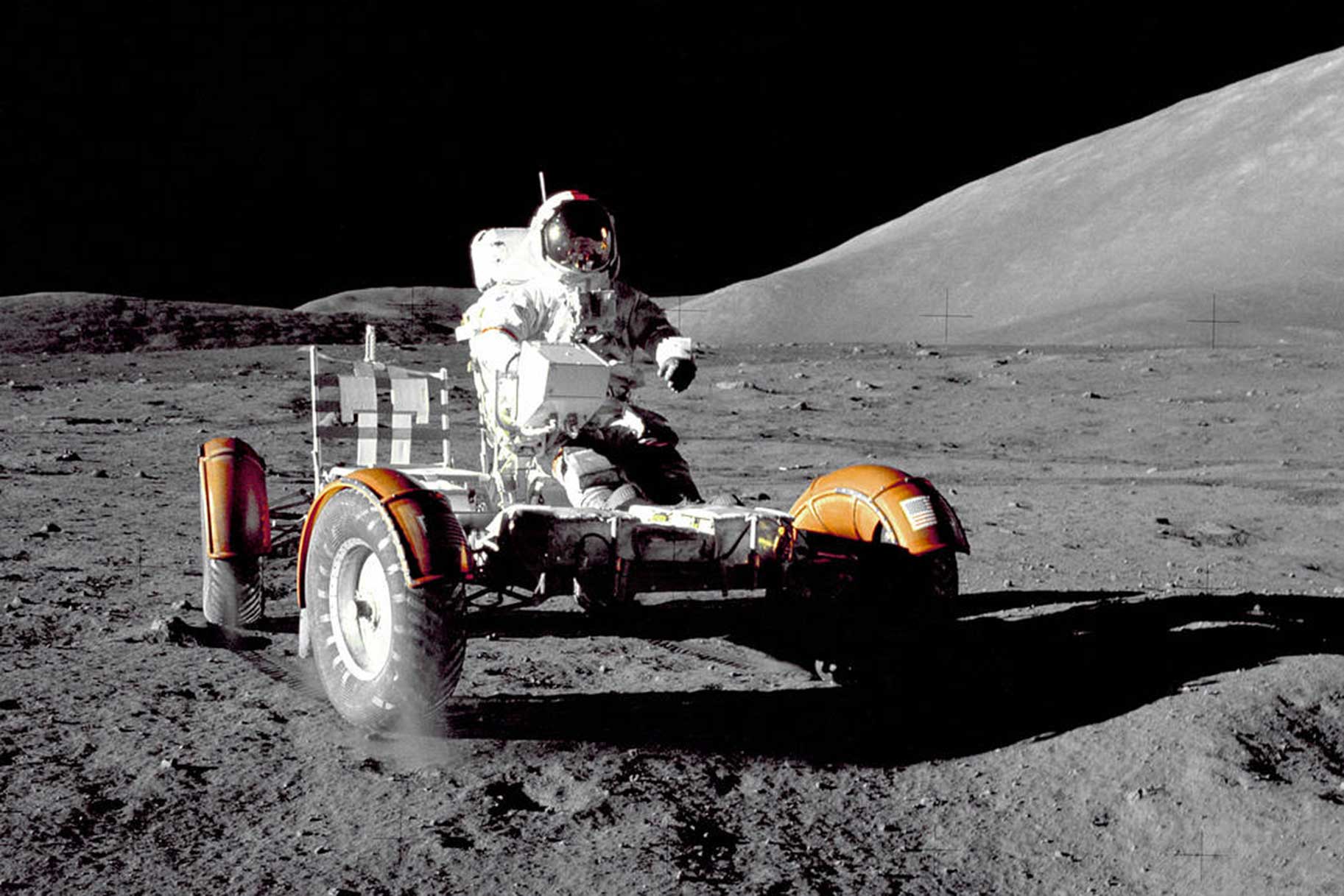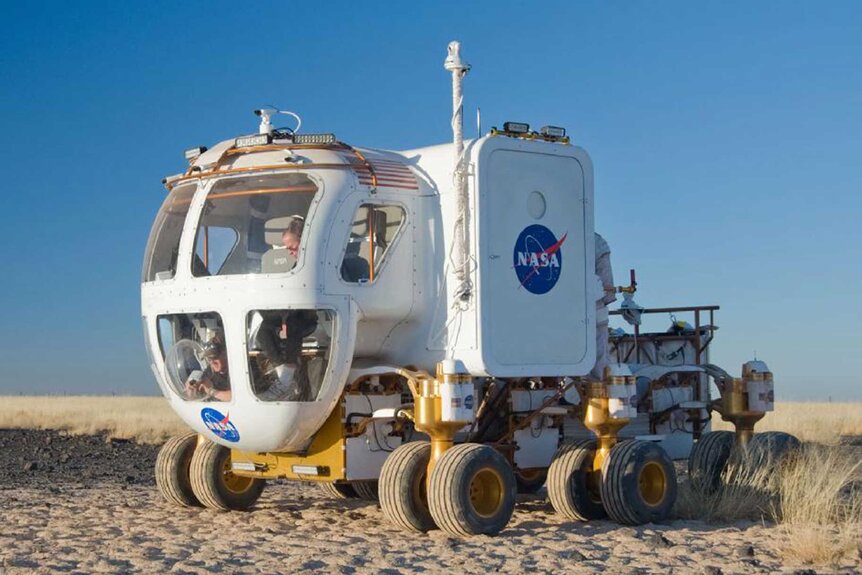Create a free profile to get unlimited access to exclusive videos, sweepstakes, and more!
In the Market for a Moon Car? NASA Seeks Proposals for Next-Gen Lunar Rover
Where we're going, we don't need roads! But we do need wheels.

In 1969, our species left the planet of our birth to touch down on an alien world for the first time. After Neil Armstrong’s historic first small step, six additional crewed missions made their way to the Moon. With the exception of the ill-fated Apollo 13, all of them succeeded (even Apollo 13 succeeded in getting its crew home safely against impossible odds) and in 1972, commander Gene Cernan stepped off of the lunar surface for the last time. Cernan’s story is beautifully told in the documentary The Last Man on the Moon, streaming now on Peacock.
At the completion of Apollo 17, more than half a century ago, Cernan and Lunar Module Pilot Harrison Schmitt put the chairs up, turned down the lights, and left the Moon for the last time. They and their predecessors left a lot of stuff behind, including their cars. A lunar roving vehicle was used on the last three Apollo missions, offering astronauts an open-air go-cart (minus the air, of course) for racing around on the Moon.
Today, they comprise the universe’s most sparsely populated and most expensive used car lot. Unfortunately, those gently used, previously owned rovers won’t get a chance at a second life. While humans are on their way back to the Moon, NASA is looking to give the next class of lunar explorers an updated ride. With that in mind, NASA has announced they are seeking proposals from commercial partners for a next-generation hybrid lunar rover.
RELATED: Lunar Rovers are Getting an Upgrade with First Toyota That's Truly an All-Terrain Cruiser
Artemis II is planned for launch in November of 2024 and will carry the first astronaut crew to visit the Moon since Apollo 17. Following their safe return, Artemis III will land astronauts back on the lunar surface. And once they’re there, they’ll need a way to get around. In addition to carrying crew members during surface operations, the next-generation rovers will also be capable of operating without a crew, not unlike the wildly successful Curiosity and Perseverance Mars rovers.
What Will It Take to Become NASA's Next-Generation Lunar Rover?
“We want to leverage industry’s knowledge and innovation, combined with NASA’s history of successfully operating rovers, to make the best possible surface rover for our astronaut crews and scientific researchers,” said Lara Kearney, manager of NASA’s Extravehicular Activity and Human Surface Mobility program at the agency’s Johnson Space Center in Houston, in a statement.
Unlike the lunar rovers of yesteryear, that could mean that the next class of rovers aren’t destined for the lunar trash heap once their respective missions are complete. Autonomous capabilities will keep them running, carrying cargo and performing experiments, even between crewed missions.
To win the contract, companies will have to provide end-to-end services. That means creating, delivering, and operating their craft on the Earth, the Moon, and all points between. Each proposed rover must also be able to house two suited astronauts, be compatible with a robotic arm, and survive the fluctuating and extreme temperatures of the lunar South Pole.
While Artemis III will be the first NASA mission to land a crew on the surface since Apollo, the rovers aren’t planned for use until Artemis V, in 2029. That means companies have about five years to develop their craft, get it to the Moon, and demonstrate its capabilities before passengers arrive.
Cernan may have been The Last Man on the Moon, but he won’t be for long.
The Last Man on the Moon is streaming now on Peacock!



























